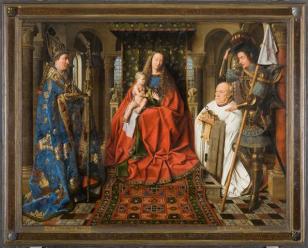This archived website 'Flemish primitives' is temporarily not being updated. Certain functionality (e.g. specific searches in the collection) may no longer be available. News updates about the Flemish primitives will appear on vlaamsekunstcollectie.be. Questions about this website? Please contact us at info@vlaamsekunstcollectie.be.
In memoriam Craig Stephen Harbison
Craig Stephen Harbison (born 1944, Baltimore), a prominent scholar of Northern Renaissance art, passed away earlier this year. Harbison taught art history for more than thirty years, primarily at the University of Massachusetts Amherst. He attended Oberlin College, where he majored in art history and studied under Wolfgang Stechow. Craig went on to pursue a PhD at Princeton, becoming one of Erwin Panofsky’s last students. He received his degree in 1972, two years after taking his first teaching job at the University of California, Davis. From 1972 to 1974 he taught at Oberlin College, his alma mater. He began his career at the University of Massachusetts immediately thereafter.
Craig authored two widely read and admired books on Northern Renaissance art: Jan van Eyck: The Play of Realism (1991, paperback 1995) and The Mirror of the Artist: Northern Renaissance Art in Its Historical Context (1995), the latter published in six languages. He wrote many articles reflecting a wide range of interests, including Italian Renaissance art, for compendia and journals such as Art Bulletin, Art History, Art Quarterly, Burlington Magazine, Oud-Holland, Renaissance Quarterly, Simiolus, and Word and Image. He also contributed to several BBC television programs on Northern Renaissance art. In some ways, Craig eschewed the conventions of scholarly art history; he believed in an imaginative, personal response to works of art.
Awarded his university’s College of Humanities and Fine Arts Outstanding Teaching Award in 1998, Craig served on more than fifty MA and MFA committees, chairing more than fifteen. He served twice as director of his department’s graduate program, and three times as department chair. In positions of academic leadership, he always offered a clear and ambitious vision for the future of art history within the broader humanities.







